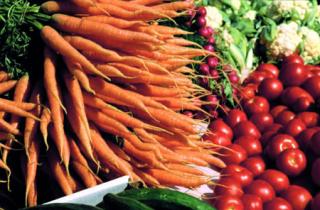Price Competition Or Price Setting? A Study Of Supermarket Pricing For Fresh Produce
Published on 23 July 2009 in Sustainability and Communities

Introduction
Sustainable farming systems require sustainable supply chains. Therefore, the efficient functioning of the food supply chain can be seen as important to the profitability of farming as on-farm technical efficiency. Supermarkets, through their sheer size, have an ever-increasing role to play in determining the nature of supply chains.
However, the role of supermarkets has once again come under increasing media and political scrutiny as the recent marked declines in milk prices at the producer level have not been matched at the retail level. For example, a recent report to EU Farm Ministers has highlighted that since the end of 2007 ex-farm and ex-factory prices have declined by 39, 31 and 18 per cent for butter, milk and cheese, respectively whilst retail prices have declined by just 2 per cent. The report concludes that these figures “clearly show that the EU dairy supply chain does not function efficiently.” (cited in Agrafacts No56-09e)
However, this simple analysis of percentages does not really shed light on whether the chain is operating efficiently as there are many factors that could have led to such divergent price changes even in an efficiently operating supply chain. It does though emphasise the fact that understanding supermarkets’ behaviour is extremely difficult due to the complexity of their operations. They operate across vertical (relationships with consumers and suppliers) and along horizontal dimensions (relationships with other supermarkets). Even the definition of their output (and therefore, by extension the price charged) may be difficult to grasp as it can include a bundle of services as well as the product itself. These difficulties have been highlighted by the largely inconclusive findings of a number of high profile and extensive investigations by the UK competition authorities aimed at determining whether supermarkets were exercising market power along the supply chain (i.e. with respect to suppliers and consumers).
There is therefore a clear need for a better understanding of how competition between supermarkets occurs and this discreet piece of research focuses on one aspect of this competition, namely what we can learn by examining how prices evolve over time.
Key Points
The main aim of the research was, through the use of statistical techniques, to analyse the relationship between the evolution of prices for six fruit and vegetable items across two major supermarkets (Tesco and Sainsbury). Of particular interest was whether or not the rise of one of the supermarkets (Tesco) to a dominant position during the period under analysis impacted on the nature of pricing. To do this we tested for any evidence of the existence of price leadership. Price leadership usually occurs where one player in the market is sufficiently large to set prices rather than prices arising out of a process of competition. Evidence of price leadership therefore may indicate the presence of market power.
The initial results (for tomatoes) were particularly interesting as they indicated a change during the period from a situation where neither supermarket were setting the price to one where Tesco appeared to be demonstrating price leadership. This might suggest that Tesco had sufficient power to set prices, and if this power was extended to other products, could explain the milk price changes highlighted above. However, this initial finding was not replicated consistently for the other products tested. In some cases Sainsbury’s seemed to be acting as the price leader, whilst in others there appeared to be no leader. Another interesting result was that for some products there was evidence of sudden switches in leadership between the two supermarkets, which might be explained by the fact that the time period under consideration was one of quite fierce competition between supermarkets (it included the entrance of Walmart to the UK market through their takeover of ASDA).
Research Undertaken
To arrive at the key findings above, data were collected for a ten year period on the prices of a range of fresh fruits and vegetables at the two supermarkets. Then using a series of statistical techniques (causality tests) the relationship between the prices were examined to assess the nature of the relationship between the prices in the two supermarkets. The tests were effectively trying to identify whether there was some form of lag between price changes in one supermarket and subsequent price changes in the other. A particular feature of the analysis was the examination of how the series evolved over time which allowed us to highlight any changes in the pricing relationships as Tesco’s dominance in the market grew.
Policy Implications
Understanding the nature of competition between supermarkets is important for policy makers when considering the need for and extent of regulation. Given their dominant role within the food supply chain, their actions have the potential to have major knock on effects to those in a weaker position within the supply chain and potentially derail other policy objectives such as ensuring a thriving and sustainable agricultural sector. Although our findings relate only to one small aspect of competition between supermarkets, and are inconclusive concerning the exercise of market power, the recent case of milk prices reinforces the need for greater transparency in pricing through the supply chain as otherwise there will always remain the suspicion that one link is benefiting at the expense of another. As other research has highlighted, trust is a key factor in efficiently functioning supply chains
Author
Alan Renwick & Cesar Revoredo-Giha alan.renwick@sac.co.uk
Topics
Sustainability and Communities







